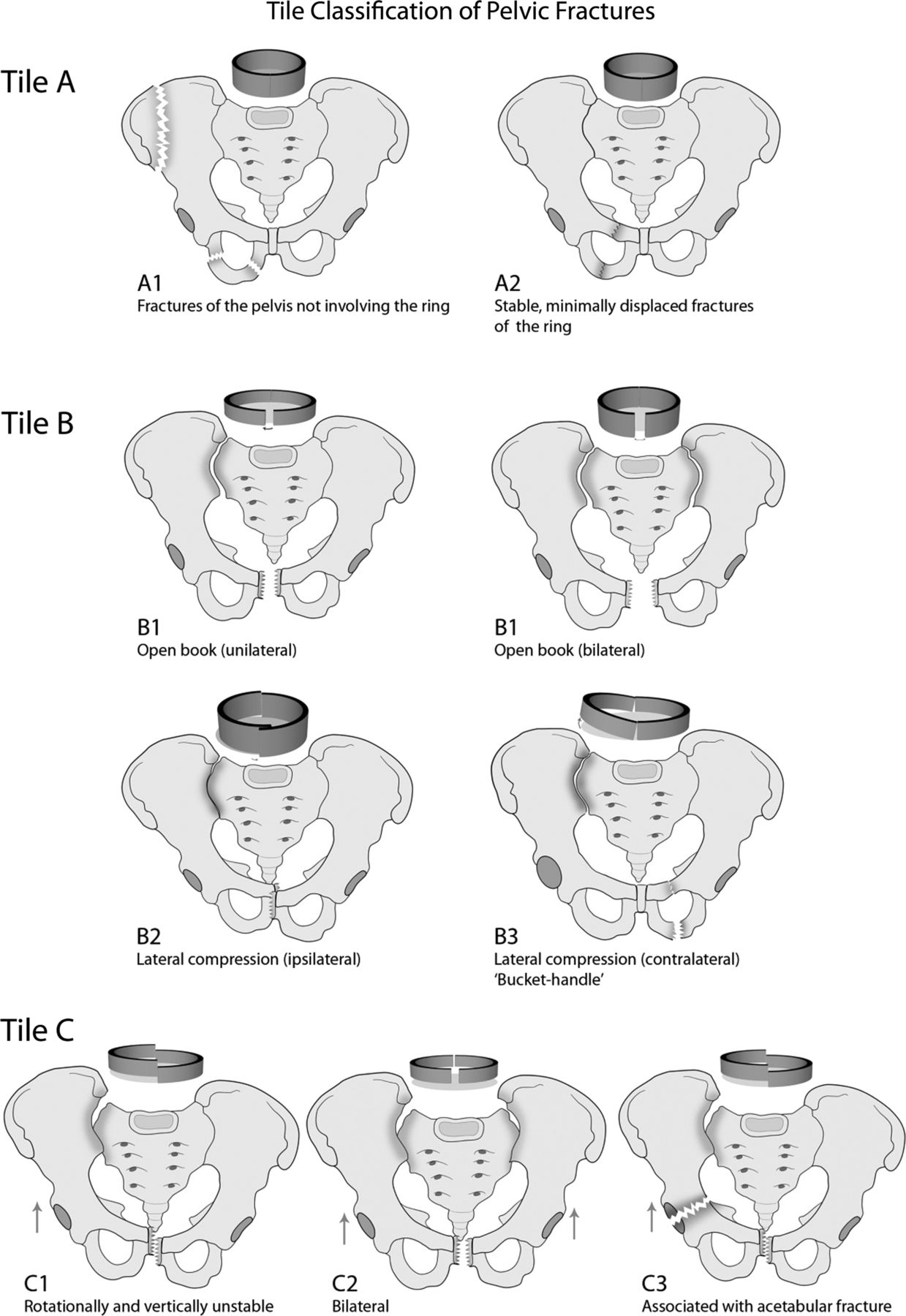OVERVIEW
This page elaborates on the basics of stabilizing the fracture in patients who have a pelvic fracture. This topic deals with the ANATOMIC stability of the patient (not to be confused with their HEMODYNAMIC STABILITY).
CLASSIFYING PELVIC FRACTURES
There are many different types of pelvic fracture classifications that are used by orthopedics. There are a few classification systems used, one example is shown below:

The purpose of all of these classification systems is to try and streamline the decision making about which types of fractures will need an orthopedic operation.
Page Updated: 03.04.2018